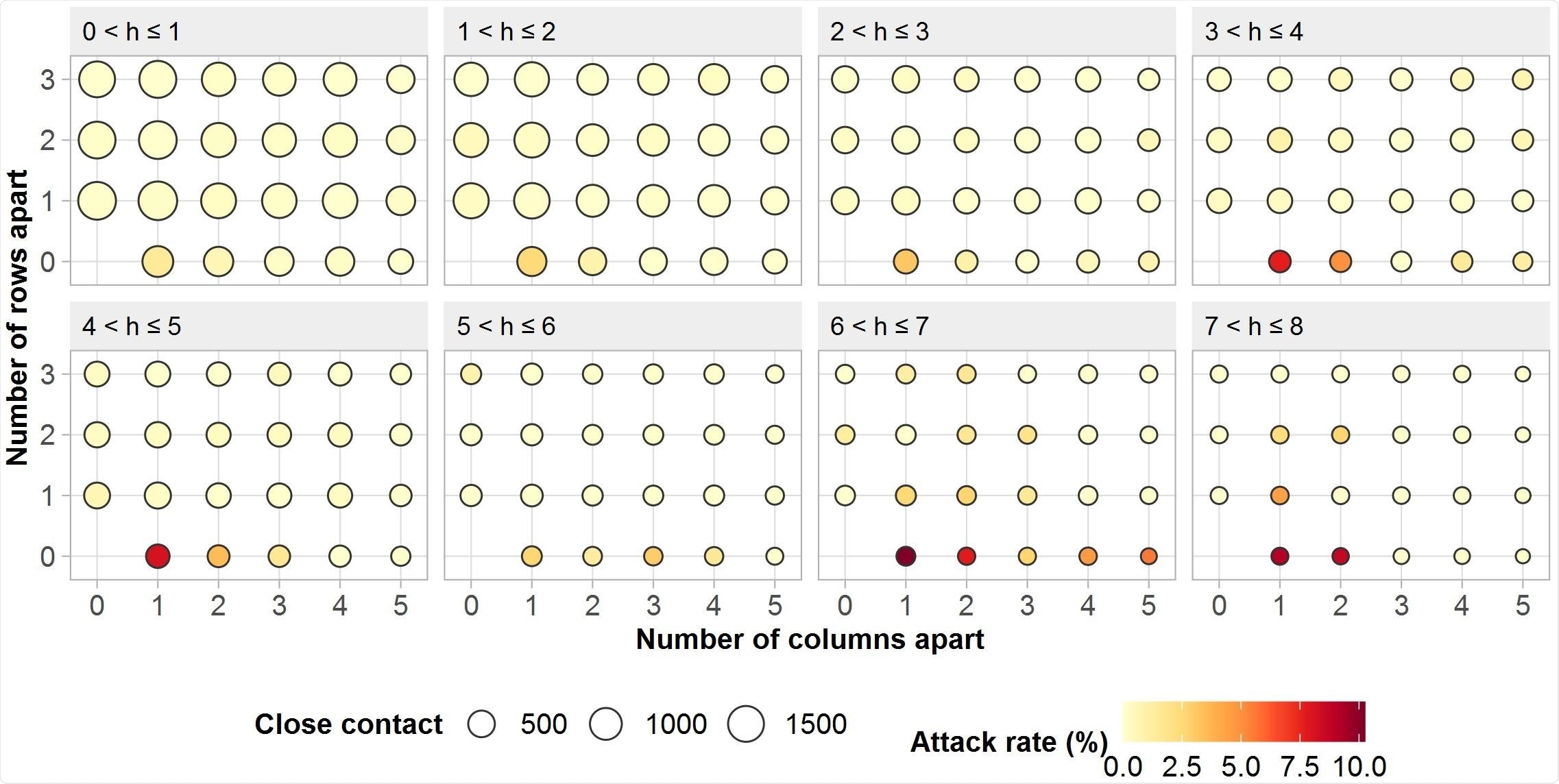A study by scientists from the University of Southampton has examined the chances of catching COVID-19 in a train carriage carrying an infectious person.

Chinese high-speed rail. Image Credit: Rickyd / SHutterstock
Based on high-speed routes in China, researchers from WorldPop found that for train passengers sitting within three rows (widthwise) and five columns (lengthwise) of an infected person (index patient) between zero and ten percent (10.3) caught the disease. The average rate of transmission for these 'close contact' travelers was 0.32 percent.
The study, in collaboration with the Chinese Academy of Sciences, China Academy of Electronics and Information Technology, and Chinese Centre for Disease Control and Prevention, also showed that passengers traveling in seats directly adjacent to an index patient suffered the highest level of transmission, with an average of 3.5 percent contracting the disease. For those sitting on the same row, the figure was 1.5 percent.

Attack rate of COVID-19 per different seats/co-travel time on train.
The 'attack rate' for each seat - the number of passengers in a given seat diagnosed with COVID-19, divided by the total number of passengers traveling in the same seat - increased by 0.15 percent for every hour that a person traveled with an index patient. For those in adjacent seats, this rate of increase was higher at 1.3 percent per hour.
Interestingly, the researchers found that only 0.075 percent of people who used a seat previously occupied by an index patient went on to contract the disease.
Details are published in the journal Clinical Infectious Diseases.
The WorldPop team, experts in population mapping, used sophisticated modeling to analyze anonymized itinerary and infection data relating to train passengers on China's high-speed G train network. This included those who had COVID-19 at the time of travel and their close contacts (who showed symptoms within 14 days of travel). The data, covering a period between 19 December 2019 and 6 March 2020, included 2,334 index patients and 72,093 close contacts. Their travel times ranged from between less than an hour to eight hours.
Lead investigator, Dr. Shengjie Lai, comments: "Our study shows that although there is an increased risk of COVID-19 transmission on trains, a person's seat location and travel time concerning an infectious person can make a big difference as to whether it is passed on. The findings suggest that during the COVID-19 pandemic, it is important to reduce the density of passengers and promote personal hygiene measures, the use of face coverings, and possibly carry-out temperature checks before boarding."
The researchers conclude that given the attack rates estimated for passengers in the same row as an index patient, a safe social distance of more than one meter is required for one hour spent traveling together. After two hours of contact, they consider a distance of less than 2.5 meters may be insufficient to prevent transmission.
Director of WorldPop, Professor Andy Tatem adds: "Our research is the first to quantify the individual risk of COVID-19 transmission on public transport based on data from epidemiological investigations of disease cases and their close contacts on high-speed trains.
"It shows that the transmission risk relates to not only the distance from an infected person, but also the time in their presence. We hope it can help to inform authorities globally about measures needed to guard against the virus and, in-turn, help to reduce its spread."
Journal reference:
- Maogui Hu, Hui Lin, Jinfeng Wang, Chengdong Xu, Andrew J Tatem, Bin Meng, Xin Zhang, Yifeng Liu, Pengda Wang, Guizhen Wu, Haiyong Xie, Shengjie Lai, The risk of COVID-19 transmission in train passengers: an epidemiological and modelling study, Clinical Infectious Diseases, , ciaa1057, https://doi.org/10.1093/cid/ciaa1057